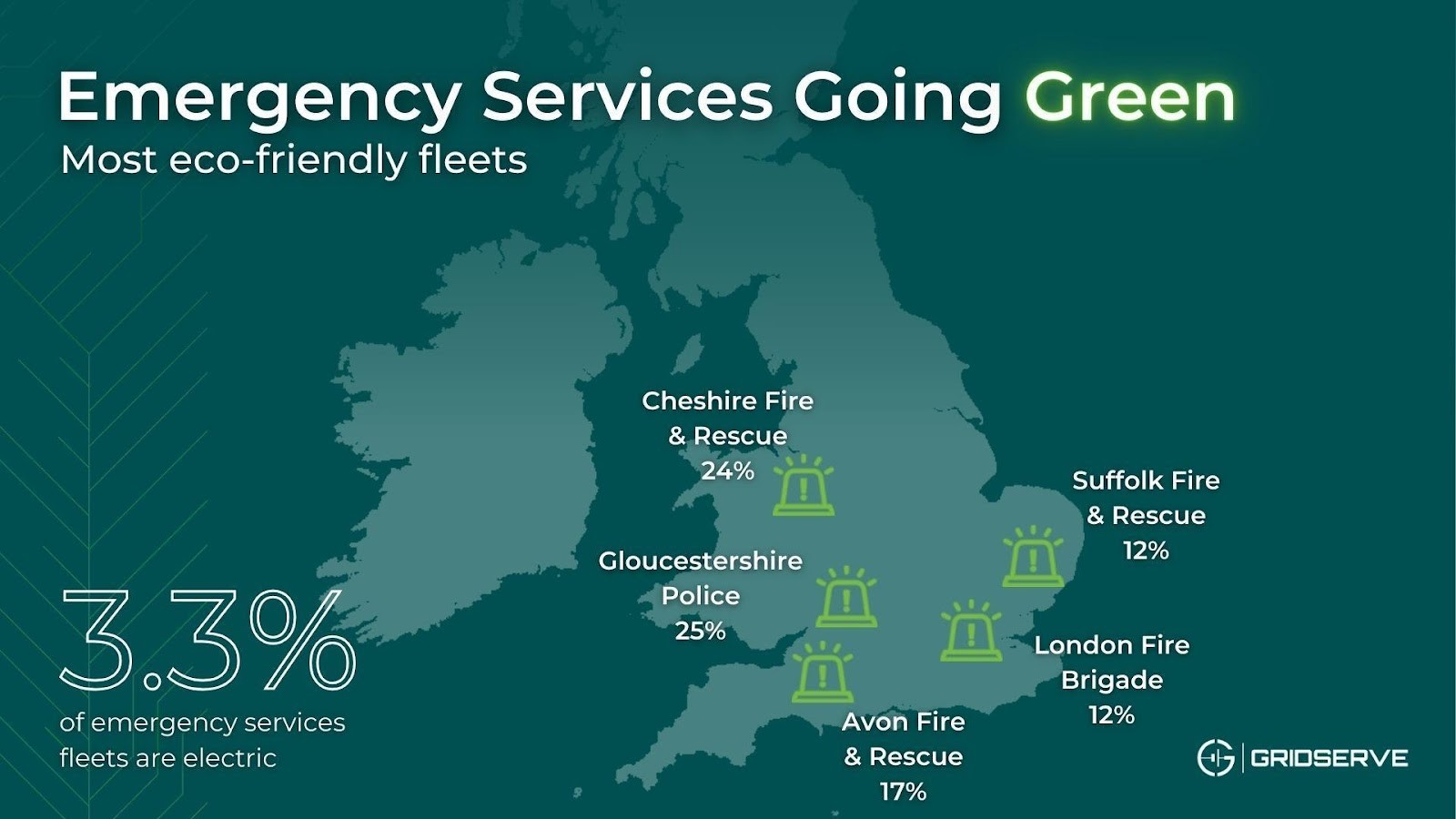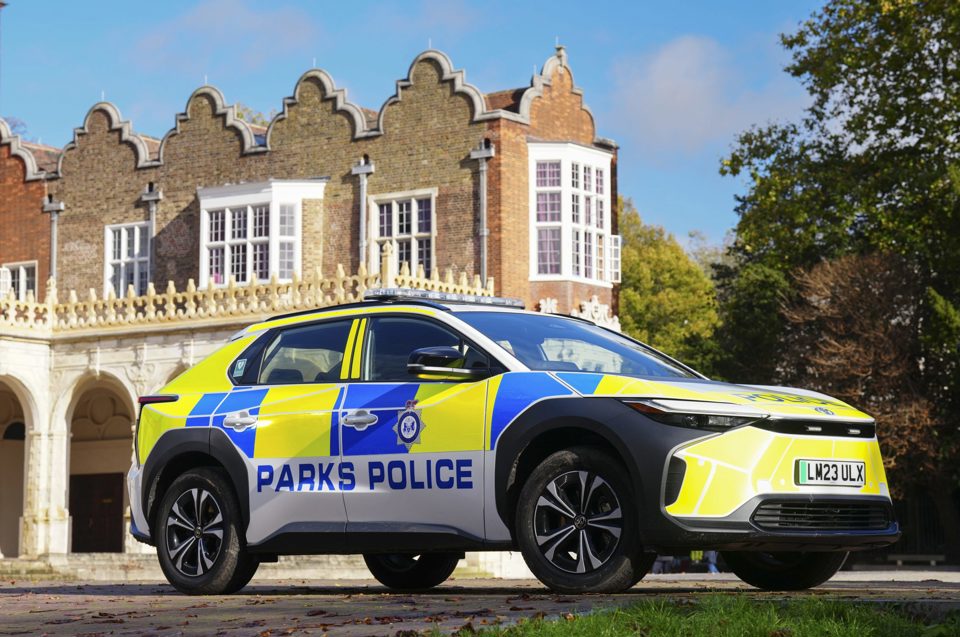The number of electric police, fire and ambulance vehicles has doubled in the past three years, new research suggests.
More than 1,000 zero-emission emergency vehicles are now in operation, according to a Freedom of Information (FOI) request sent to police, fire and ambulance services by Gridserve.
With the average mileage of an emergency service vehicle standing at 10,485 miles a year and making predominantly short journeys, operating within the strict boundary of an authority’s jurisdiction, the charge point operator says that blue light vehicles are prime for electrification.
A previous study by Cenex found that more than three-quarters of the fleet operated by Essex police could be replaced by battery electric vehicles (BEVs) with sufficient range to complete their average daily mileages.
The same study found that this would reduce emissions by half (50%) for police forces and give a lifetime cost saving of £6,000-7,000 per vehicle.
Despite these benefits, however, it found that police will still need to adapt their operations to accommodate BEVs, and some vehicles may need zero-emission technologies to develop more before they are suitable before 2030.
The Gridserve research revealed that fire brigades are leading the charge and making the switch quicker than ambulance services and police forces.
More than five fire services across the country are operating a fleet with more than 10% of vehicles being fully electric.
The FOI data found that Gloucestershire Police Force has the greenest fleet out of all the emergency services with a quarter of its fleet being powered by electricity.

There is also now a commercially available all-electric fire engine (the E1 EV0 by Emergency One) and an electric ambulance from Ford, which was deployed on its first EV 999 callout in January 2024 by the London Ambulance Service.
The NHS has also set up a Greener NHS team with the goal of lowering its carbon footprint.
Sam Clarke, chief vehicle officer at Gridserve, said: “The nation’s emergency services vehicles are constantly making life-saving journeys at all hours, so making this service more energy and cost efficient is important in helping these fleets to do their work.
“It’s great to see the progress being made in this space, with more and more services across the country going electric.”





















Login to comment
Comments
No comments have been made yet.